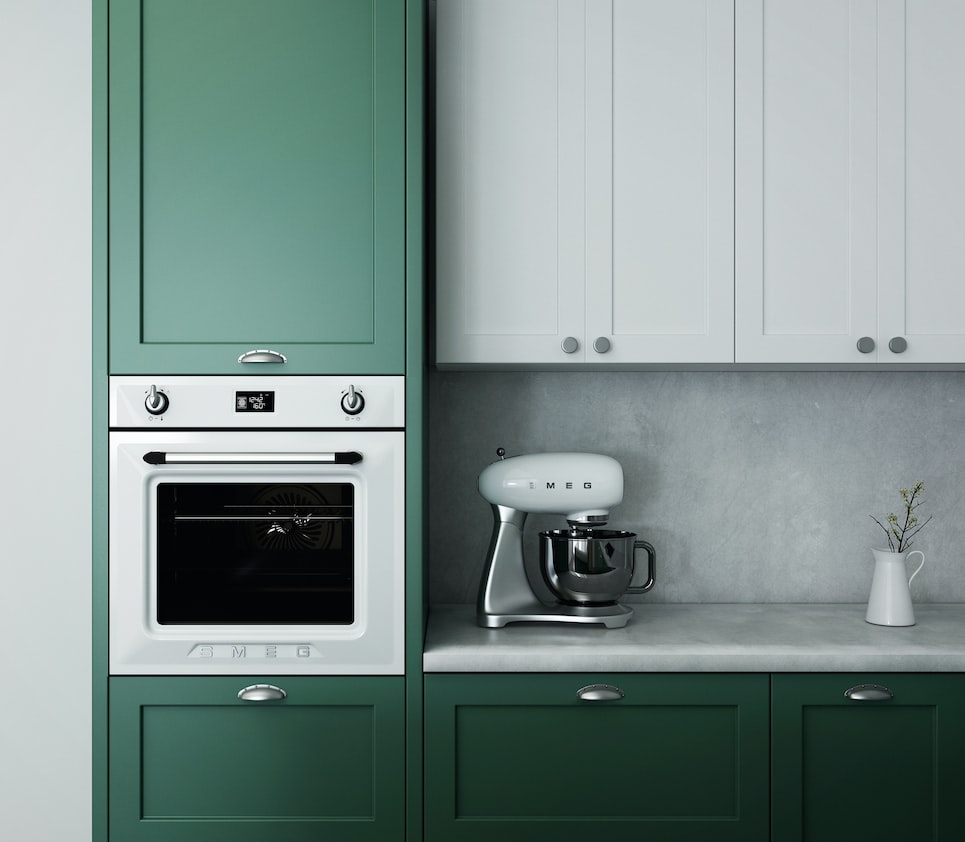A frequent inquiry in regard to home maintenance is “What appliances should you clean?” Keeping them spotless isn’t just about appearances; it’s essential for their efficacy and durability. This blog post will guide you through the cleaning procedures of various household appliances.
We’ll delve into how to perform a deep clean on your refrigerator and maintain its cleanliness daily. You’ll learn routine monthly dishwasher cleaning techniques, along with an annual comprehensive cleanup method. We’ll explore effective ways to remove grease from cooktops and add shine after cleaning.

Furthermore, we’ll discuss steps for effective microwave internal cleanup, including handling turntables during microwave cleanup. We’ll share washing machine hygiene practices that prevent germ buildup in these essential machines.
Small kitchen appliance hygiene cannot be overlooked; hence we’ve dedicated a section discussing its importance too. Special care tips for maintaining stainless steel surfaces are included as well as weekly humidifier cleansing regimes. So let’s dive in and discover what appliances you should clean regularly!
Cleaning Your Refrigerator
Keep your fridge fresh and fabulous with regular cleaning. Give it a good scrub every three months, and don’t forget to wipe up spills ASAP and disinfect those handles.
Deep Clean: The Ultimate Fridge Makeover
Empty out your fridge and get ready to work some magic. Mix warm water and mild dish soap, then give each shelf and drawer a good scrub. And don’t neglect those sneaky door seals – they can harbor bacteria that mess with your food’s freshness. Need more tips? Check out this awesome guide.
Daily Maintenance: Spills, Be Gone.
Stay on top of spills like a superhero to prevent funky odors and stains. And don’t forget to disinfect those high-touch areas, like handles, with antibacterial wipes or sprays. Keep it clean, folks.
Maintaining Cleanliness in Dishwashers
Keep your dishwasher clean for a long-lasting, top-performing machine. Regular maintenance and a monthly deep clean will keep your dishes sparkling and your dishwasher happy.
Monthly Dishwasher Cleaning: Vinegar and Baking Soda
Break down grease and food particles by filling the detergent cup with white vinegar and running an empty cycle. Then, sprinkle baking soda on the bottom and run another short cycle to freshen up the interior. If you’re lazy though, you can use something like these dishwasher cleaning tablets from Amazon.com
Annual Dishwasher Cleanup: Say Goodbye to Clogged Spray Arms
Once a year, give your dishwasher a thorough check-up. Clean the spray arms with a soft toothbrush dipped in warm soapy water to unclog those tiny holes.
Remember to maintain your dishwasher for the best results with your dishes.
Care Tips for Cooktops
Keep your cooktop clean for peak performance and longevity. Grease buildup can be a real pain, especially if you’re a regular home chef. But fear not. There are effective ways to tackle this stubborn residue.
Get rid of grease with a pantry powerhouse
Baking soda mixed with vinegar is a natural cleaning superhero. This dynamic duo dissolves tough grease stains like nobody’s business. Just apply the mixture, let it sit, and wipe it off. Easy peasy.
Add some sparkle to your cooktop
After cleaning, give your stovetop a dazzling finish with a mild dishwashing soap solution and a hot water rinse. This will ensure a sparkling shine and remove any leftover baking soda-vinegar mixture. For more tips on maintaining cleanliness and adding shine, check out this helpful resource.
Keeping your kitchen clean means more than just washing dishes and wiping countertops. Show your cooktop some love for a cleaner cooking environment.
Microwave Maintenance Tips
Keep your microwave in top shape with these maintenance tips. A simple and effective method is using baking soda and water paste. It’s like a superhero cleaner, fighting off stubborn food residues and stains.
Steps for Effective Microwave Internal Cleanup
- Mix two parts baking soda with one part water to create a powerful paste.
- Spread the paste all over the microwave’s interior, leaving no corner untouched.
- Let it sit for a few minutes, giving it time to soften up hardened food residue and stains.
- Wipe off the paste with a damp cloth or sponge, gently scrubbing tougher spots if needed.
How to Handle Turntables During Microwave Cleanup
Remember to remove the turntable. It’s the unsung hero of even heating. Remove it carefully and wash it separately with warm soapy water. Ensure it is completely dry before reinstalling, and abstain from any wetness that could cause mildew proliferation.
Washing Machine Hygiene Practices
Washing machines may seem self-cleaning, but they can actually become germ breeding grounds. Gross, right? To maintain a healthy home environment, it is essential to keep your washing machine clean and hygienic.
Preventing Germ Buildup in Your Washing Machine
To keep your machine spick and span, run an empty hot water cycle at least once a month. You can do so by using some highly rated tablets from Amazon like these, as well as similar ones. It’ll help get rid of bacteria and detergent residue. Double win.
For a natural cleaning boost, add two cups of distilled white vinegar to the drum and run another hot water cycle. Vinegar is like a superhero for cleaning. Pow.
Afterward, don’t forget to leave the door open to let the interior dry completely. Mold is not invited to this party.
Oh, and don’t neglect those sneaky little parts like dispensers and fabric softener compartments. They can harbor germs too, so give them a good clean regularly. No germs allowed.
Caring For Small Kitchen Appliances
Don’t forget about your tiny kitchen helpers. Small kitchen appliances are important in keeping your kitchen clean and tidy, from coffee makers to blenders and toaster ovens. From coffee makers to blenders and toaster ovens, these little guys need some TLC too.
The Hygiene Hype
Keeping your small appliances clean isn’t just about making them look shiny. It’s about keeping your kitchen safe from nasty bacteria that can ruin your mealtime. Follow the manufacturer’s instructions for cleaning, because they know best.
- Unplug your appliance and take off any removable parts.
- Give those parts a good rinse with warm soapy water, then dry them off before putting them back.
- Now, the main body or base needs a wipe-down with a damp cloth. But don’t dunk it in water, or you’ll fry its electrical soul.
- If there are stubborn stains or gunk, grab a soft brush or toothpick to get into those nooks and crannies. Scratches are not invited to this cleaning party.
By adding these cleaning steps to your routine, your kitchen will be a clean and safe haven for all your culinary adventures. Remember, cleanliness is next to godliness.
Special Care For Stainless Steel Surfaces
Your stainless steel appliances, like ovens, need some TLC because they’re sensitive to harsh chemicals. So, be gentle and use effective cleaning methods that won’t ruin the surface. One trick is to heat your oven to 225 degrees Fahrenheit, let it cool, and then apply a mixture with dishwashing soap.
Safe Ways to Maintain Stainless Steel Appliances
- Step 1: Preheat your oven to 225 degrees Fahrenheit and let it cool down.
- Step 2: Mix equal parts water and dishwashing soap to create a solution.
- Step 3: Gently apply the solution to the cooled oven surface using a soft cloth or sponge.
- Step 4: Wipe off any excess soap with a damp cloth, making sure no residue is left behind to cause streaks when it dries.
This method will give you shiny results without any damage, unlike those commercial cleaners that can do more harm than good. Remember, proper maintenance can keep your stainless steel appliances looking new for years.
Humidifier Cleaning Techniques
Maintaining a clean humidifier is crucial for its performance and longevity. A neglected humidifier can become a breeding ground for bacteria and mold, which could potentially harm your health. So, don’t let your humidifier turn into a germ party.
Weekly Humidifier Cleansing Regime
Disconnect the power and take apart the device in accordance with its maker’s guidelines. Now, it’s time to get your scrub on. Mix 1 part bleach with 9 parts water (or use CDC-recommended solutions) and soak a brush in this magical potion. Gently scrub all parts of the humidifier, making sure to reach every nook and cranny. Rinse thoroughly to bid farewell to any lingering residue.
Remember, in addition to the weekly cleanup, filters need some love too. Replace them every one to two months (or as specified by the manufacturer) to prevent clogs and the growth of microscopic monsters.
Regular maintenance of your indoor air quality appliances, like humidifiers, not only keeps them happy but also contributes to a healthier living space. So, let’s keep the air clean and fresh.
FAQs in Relation to What Appliances Should You Clean
What appliances need to be cleaned?
All household appliances, including refrigerators, dishwashers, cooktops, microwaves, washing machines, and small kitchen gadgets like coffee makers and toasters, should be regularly cleaned. Don’t forget about stainless steel surfaces and humidifiers.
How often should you clean your major appliances?
Different appliances require different cleaning frequencies. Refrigerators should be deep-cleaned every 6 months but maintained daily. Dishwashers need monthly routine cleans with an annual comprehensive cleanup.
Why is it important to clean appliances?
Cleaning your home’s appliances helps extend their lifespan by preventing the buildup of dirt and grime that can cause malfunctioning. Plus, it keeps things hygienic by eliminating germs and bacteria.
When should I clean my kitchen appliances?
Kitchen appliance cleanliness depends on usage frequency. For example, microwaves used daily may require a weekly internal cleanup, while less frequently used items like a toaster might only need monthly attention.




